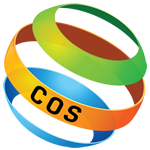
For 40 years, Curtis Dennis worked as a commercial contractor and finish carpenter running his own business in Southern California. The money was good, and the work was plentiful.
But, he worked long hours and many evenings, Saturdays, and holidays. Then there was all the driving...
“My commute was always the great variable,” he remembers. “We usually worked from 7 a.m. to 3:30 p.m., so I had to be out the door by 4:30 or 5 in the morning, depending on how far away the job was.
“You just never knew. The job site could be a 45-minute drive from home, but if there was a traffic issue, I could get hung up for 2-3 hours and not make it home until 8 at night,” he cringes. “Nothing worse than sitting on a freeway. You’re tired, you’re dirty, traffic’s bumper-to-bumper. All you want to do is get home, and you can’t.”
One time, he was stranded for five days due to a forest fire that shut down all travel in the area. Another time he worked for nine months out of town on military bases, flying out on Sunday evenings and flying back on Fridays.
Looking back, Curtis wonders, “Why did I ever agree to that? But that was the business, and you just did it.”
“There wasn’t a whole lot of time for family,” he sighs.
The Unofficial Copywriter
Curtis knew there had to be a better way to make a living. Hiring a couple of employees helped. He didn’t have to be on the job site as much, but he now had more administrative and managerial duties, as a result. Plus, he sweated having to bridge the 90-day gap between having to pay employees and getting paid by clients.
For a while, Curtis and his former wife shifted their business to sell much-needed contractor forms online. She handled the coding, and Curtis became her unofficial copywriter.
“It was great!” Curtis says. “The year I closed down my contracting company, she pulled in $130,000 working from our living room.”
Curtis became a stay-at-home dad for his autistic son, started his first hobby site, and continued to write copy for the business he shared with his wife.
Sadly, relationship issues started popping up, eventually leading to separation and divorce.
A Builder at Heart
Around the same time, Curtis learned about American Writers & Artists Institute (AWAI) and took Nick Usborne’s course, Writing for the Web 2.0.
“I knew copywriting was essential, but I was more focused on SEO and web design at that point,” Curtis says. “My plan was to go from building buildings in the real world to building websites in cyberspace.”
But, he had to make sure he had an income. So, Curtis went back to work in construction (for someone else this time) as a field supervisor and back to school for a degree in web development and design. While he was in school, WordPress took off like wildfire.
“Anybody can put up a website now. With templates, you can customize them all you want, which is simpler and cheaper than hiring somebody to build a website starting from a blank page,” he says.
Despite that, he secured some gigs building websites and writing copy for nonprofits that helped families of kids with special needs. He loved the work, and it was personally rewarding. But, ultimately, it just wasn’t enough money.
Bigger Budgets — B2B Copywriting for the Win
Curtis revisited AWAI and took a few more courses, including Modern B2B Copywriting by Steve Slaunwhite.
“I decided to make the shift and go where the money was,” he says. “I learned a lot about where the clients who have budgets are. It’s not in the ‘mom and pop’ arena. It’s in the B2B world.”
He continued to write copy on the side while working full-time in construction. Then a torn rotator cuff required surgery and rehabilitation that kept him off the job site for several weeks. And it also gave him more free time to do what he wanted.
He attended AWAI’s FastTrack to Copywriting Success Bootcamp and Job Fair that year. There, he won a spec assignment with the Professional Writers’ Alliance (PWA) and pitched and landed two e-zine articles for The Writer’s Life.
In 2020, when the pandemic shut down construction sites for months, Curtis was ready to fill the gap with freelance copywriting.
And, the perfect project emerged. AWAI hired him as its B2B Reality Blogger for a one-year contract — that was ultimately extended to 18 months. His portfolio of weekly blog posts over the course of 75 weeks helped him land bigger and better-paying clients.
He also joined AWAI’s Circle of Success for access to AWAI’s full library of programs and resources. “Nothing beats COS,” he says. “Once you take the plunge, there’s all kinds of stuff in there.”
When Curtis’ former employer offered him $40 an hour to come back full-time, Curtis turned him down and “watched his jaw hit the ground.”
About to Hit Six Figures
These days, Curtis is still in the “building business,” but it’s revenue rather than buildings. That has inspired his family members to try it, as well.
I’ve already converted my daughter, and she’s doing really, really well,” he gushes.
“I wouldn’t go back to construction at this point. Copywriting just fits my style and my personality. Plus, I really don’t like getting up at 4:40 in the morning,” he chuckles.
Curtis works about 40 hours a week, but no Saturdays and no holidays now. He also doesn’t have any problems scheduling doctor, dentist, or other appointments. Nor does he miss spending $200+ a week on gasoline.
When he surpassed his half-way annual income goal by June, he slowed down for a couple of months to do projects around the house. He even enjoyed the freedom to take an impromptu trip over the Labor Day weekend.
Curtis’ annual income is just shy of six figures — a level that fully replaced his contractor income. And, he lives comfortably in his forever home with his girlfriend.
“It’s literally 27 steps from my bedroom to my office,” Curtis beams. “I can be ready for a meeting in 5 minutes. I have much more control over my schedule now. The personal freedom has just opened up.”
Curtis’ Tips for Copywriters
- Set up your business correctly BEFORE you try to get clients – Set up any business licenses, EIN, business financial accounts, forms, and onboarding processes. It’s much easier to take care of these while you’re finishing a course or writing samples, than when you’re dealing with a new client and a publishing deadline.
- Figure out your marketing strategy ASAP – “There are essentially two ways to get clients. You go out and find them, or they find you. I opted to let my clients find me, so my website is on page one of the Google SERPs for five different keywords,” he says.
- Go with what you know (for now) – “One of my first clients required five days of my time and energy to earn that $250 per-post price we agreed upon — three days researching and two days writing. Less time researching on topics you already know a lot about will translate into more time available for writing.”
DISCLAIMER: This Case Story is true based on the information provided us, but does not claim to represent typical results. Any writer’s success depends on many variables which are unique to each individual, including commitment and effort. Case Study results are meant to demonstrate what the most dedicated students have done and should not be considered average. AWAI.com makes no guarantee of any financial gain from the use of its products.
Ready to pursue the writer’s life?
Learn more about the program that launched Curtis’ career, Modern B2B Copywriting.

“It’s literally 27 steps from my bedroom to my office. I can be ready for a meeting in 5 minutes. I have much more control over my schedule now. The personal freedom has just opened up.”
Curtis Dennis
Camano Island, Washington
Commercial carpenter and contractor
Curtis won a spec challenge at AWAI’s 2019 Bootcamp
- Circle of Success
- Writing for the Web 2.0
- Modern B2B Copywriting
DISCLAIMER: This Case Story is true based on the information provided us, but does not claim to represent typical results. Any writer’s success depends on many variables which are unique to each individual, including commitment and effort. Case Study results are meant to demonstrate what the most dedicated students have done and should not be considered average. AWAI.com makes no guarantee of any financial gain from the use of its products.
